Abstract
The usefulness of computed tomography (CT) was assessed in 325 consecutive patients with a "clinically definite first stroke" from a community stroke register. CT detected five "non-stroke" lesions (two cerebral gliomas, one cerebral metastasis, and two subdural haematomas), a frequency of 1.5%. Five patients were identified with cerebellar haemorrhage, but only one survived long enough to have a CT scan. CT was useful in excluding intracranial haemorrhage as the cause of the stroke in four patients receiving anticoagulants and seven receiving antiplatelet treatment; it showed intracranial haemorrhage in one patient taking aspirin. Forty six patients were in atrial fibrillation at the time of their stroke; four had intracranial haemorrhages and three had haemorrhagic cerebral infarcts. Nineteen patients with presumed ischaemic minor stroke were considered suitable for carotid endarterectomy; CT showed small haemorrhages in two. The CT scan provides very useful information in a minority (up to 28%) of patients with first stroke, who can be selected on quite simple criteria: (a) doubt (usually because of an inadequate history) whether the patient has stroke or a treatable intracranial lesion; (b) the possibility of cerebellar haemorrhage or infarction; (c) the exclusion of intracranial haemorrhage in patients who either are already taking or likely to need antihaemostatic drugs or are being considered for carotid endarterectomy; (d) if the patient deteriorates in a fashion atypical of stroke.
Full text
PDF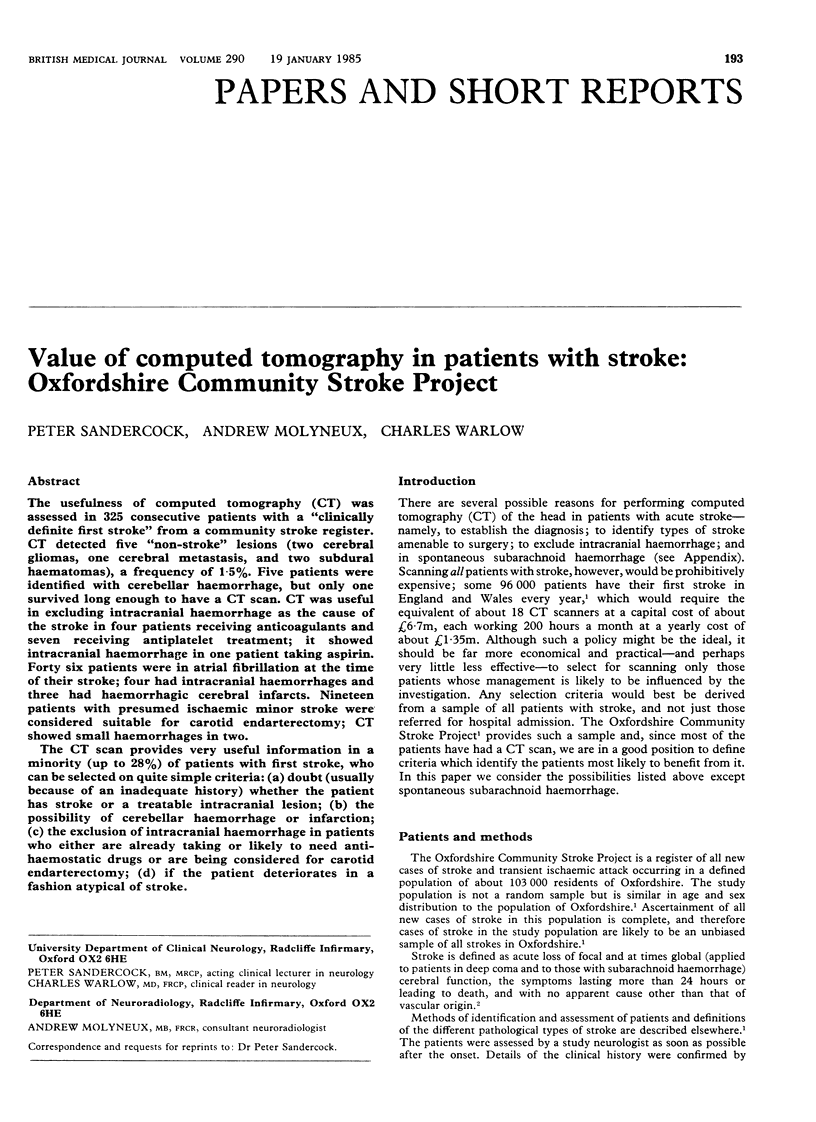
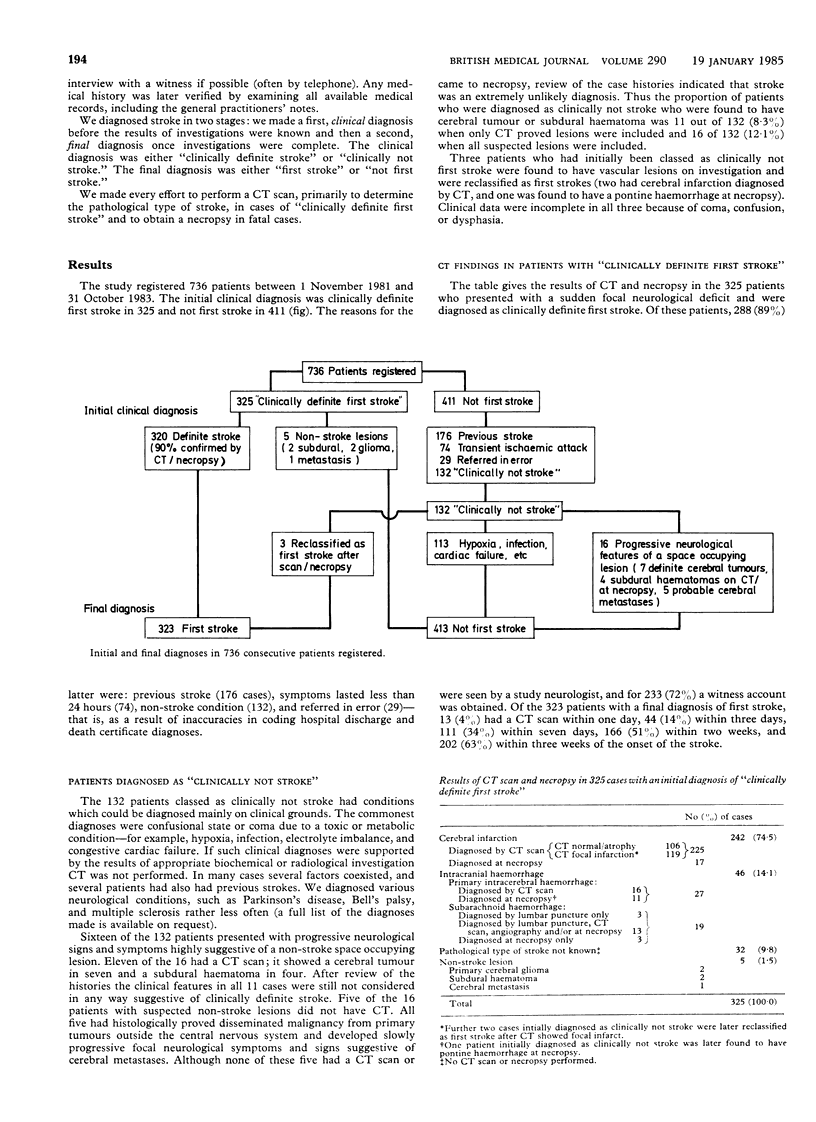
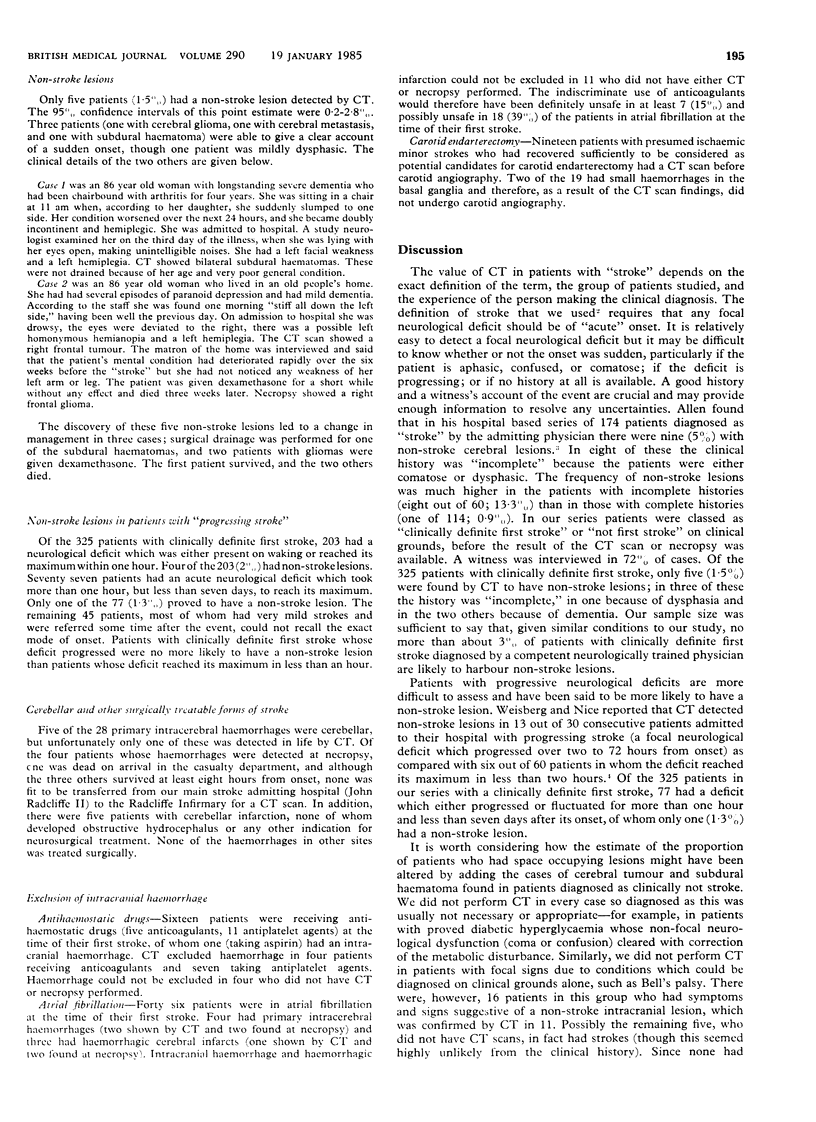
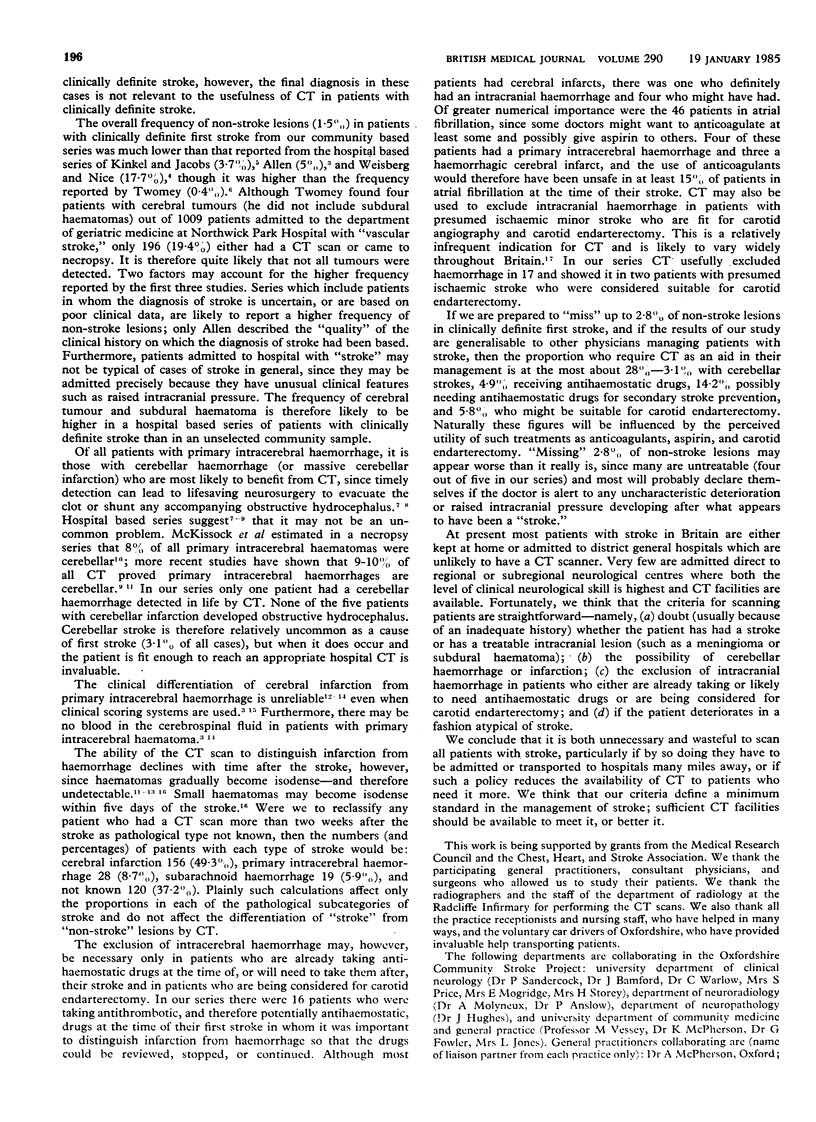
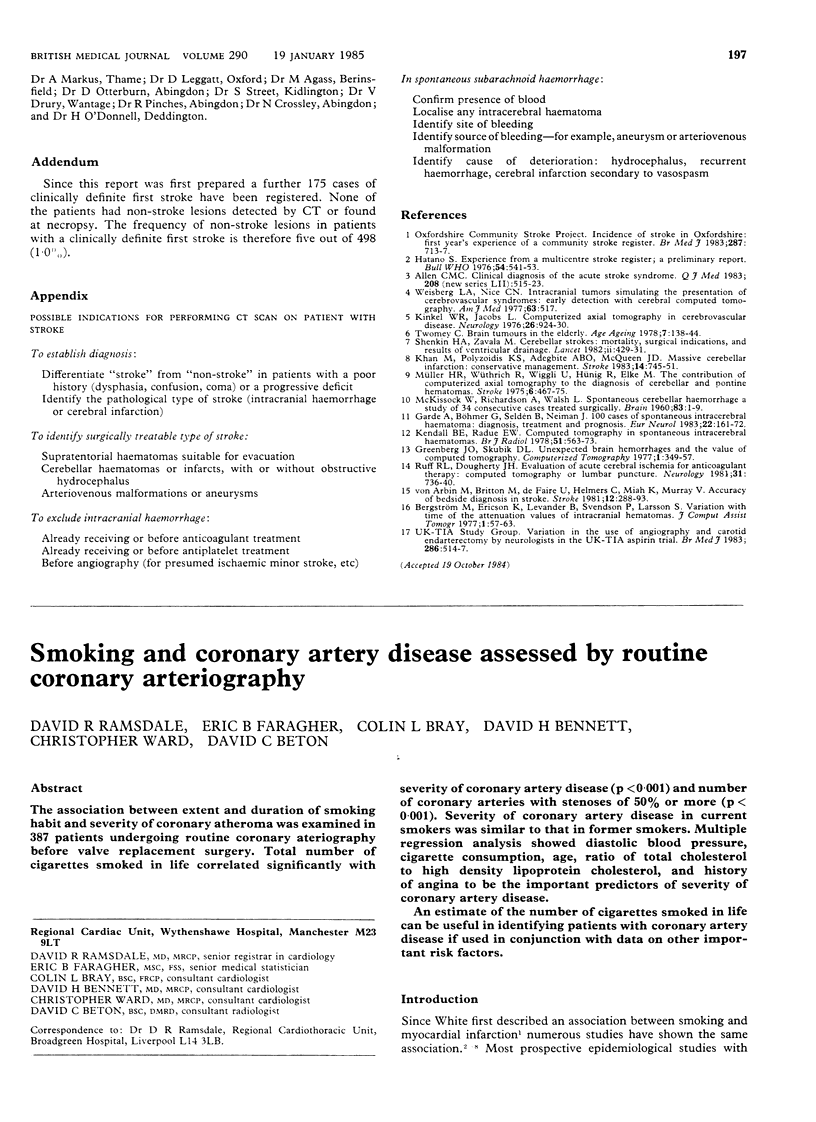
Selected References
These references are in PubMed. This may not be the complete list of references from this article.
- Bergström M., Ericson K., Levander B., Svendsen P., Larsson S. Variation with time of the attenuation values of intracranial hematomas. J Comput Assist Tomogr. 1977 Jan;1(1):57–63. doi: 10.1097/00004728-197701000-00008. [DOI] [PubMed] [Google Scholar]
- Greenberg J. O., Skubick D. L. Unexpected brain hemorrhages and the value of computerized tomography. Comput Tomogr. 1977;1(4):349–357. doi: 10.1016/0363-8235(77)90019-9. [DOI] [PubMed] [Google Scholar]
- Gårde A., Böhmer G., Seldén B., Neiman J. 100 cases of spontaneous intracerebral haematoma. Diagnosis, treatment and prognosis. Eur Neurol. 1983;22(3):161–172. doi: 10.1159/000115555. [DOI] [PubMed] [Google Scholar]
- Hatano S. Experience from a multicentre stroke register: a preliminary report. Bull World Health Organ. 1976;54(5):541–553. [PMC free article] [PubMed] [Google Scholar]
- Kendall B. E., Radue E. W. Computed tomography in spontaneous intracerebral haematomas. Br J Radiol. 1978 Aug;51(608):563–573. doi: 10.1259/0007-1285-51-608-563. [DOI] [PubMed] [Google Scholar]
- Khan M., Polyzoidis K. S., Adegbite A. B., McQueen J. D. Massive cerebellar infarction: "conservative" management. Stroke. 1983 Sep-Oct;14(5):745–751. doi: 10.1161/01.str.14.5.745. [DOI] [PubMed] [Google Scholar]
- Kinkel W. R., Jacobs L. Computerized axial transverse tomography in cerebrovascular disease. Neurology. 1976 Oct;26(10):924–930. doi: 10.1212/wnl.26.10.924. [DOI] [PubMed] [Google Scholar]
- Müller H. R., Wüthrich R., Wiggli U., Hünig R., Elke M. The contribution of computerized axial tomography to the diagnosis of cerebellar and pontine hematomas. Stroke. 1975 Sep-Oct;6(5):467–475. doi: 10.1161/01.str.6.5.467. [DOI] [PubMed] [Google Scholar]
- Ruff R. L., Dougherty J. H., Jr Evaluation of acute cerebral ischemia for anticoagulant therapy: computed tomography or lumbar puncture. Neurology. 1981 Jun;31(6):736–740. doi: 10.1212/wnl.31.6.736. [DOI] [PubMed] [Google Scholar]
- Shenkin H. A., Zavala M. Cerebellar strokes: mortality, surgical indications, and results of ventricular drainage. Lancet. 1982 Aug 21;2(8295):429–432. doi: 10.1016/s0140-6736(82)90453-6. [DOI] [PubMed] [Google Scholar]
- Twomey C. Brain tumours in the elderly. Age Ageing. 1978 Aug;7(3):138–145. doi: 10.1093/ageing/7.3.138. [DOI] [PubMed] [Google Scholar]
- Weisberg L. A., Nice C. N. Intracranial tumors simulating the presentation of cerebrovascular syndromes. Early detection with cerebral computed tomography (CCT). Am J Med. 1977 Oct;63(4):517–524. doi: 10.1016/0002-9343(77)90196-6. [DOI] [PubMed] [Google Scholar]
- von Arbin M., Britton M., de Faire U., Helmers C., Miah K., Murray V. Accuracy of bedside diagnosis in stroke. Stroke. 1981 May-Jun;12(3):288–293. doi: 10.1161/01.str.12.3.288. [DOI] [PubMed] [Google Scholar]


